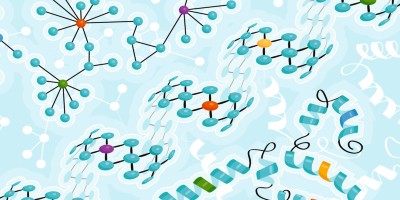Abstract
Although hereditary disease has been recognized for centuries, only recently has it become the prevailing explanation for numerous human pathologies. Before the 1970s, physicians saw genetic disease as rare and irrelevant to clinical care. But, by the 1990s, genes seemed to be critical factors in virtually all human disease. Here I explore some perspectives on how and why this happened, by looking at two genetic diseases — familial dysautonomia and phenylketonuria.
References
Rosenberg, C. & Golden, J. (eds) Framing Disease: Studies in Cultural History (Rutgers Univ. Press, New Brunswick, New Jersey, 1992).
Epstein, S. Impure Science: AIDS, Activism, and the Politics of Knowledge (Berkeley, Univ. of California Press, 1996).
Aronowitz, R. Making Sense of Illness: Science, Society and Disease (Cambridge Univ. Press, Cambridge, 1998).
Jacobs Brumberg, J. Fasting Girls: The Emergence of Anorexia Nervosa as a Modern Disease (Harvard Univ. Press, Cambridge, Massachusetts, 1988).
McKusick, V. The growth and development of human genetics as a clinical discipline. Am. J. Hum. Genet. 27, 261–273 (1975).
Axelrod, F. B., Porges, R. F. & Sein, M. E. Neonatal recognition of familial dysautonomia. J. Pediatr. 110, 946–948 (1987).
Riley, C. M. A short history of Familial dysautonomia. A report to the Dysautonomia Foundation 19 November (1979).
Riley, C. M., Day, R. L., Greeley, D. M. & Langford, W. S. Central autonomic dysfunction with defective lacrimation: report of five cases . Pediatrics 3, 468–481 (1949).
The Dysautonomia treatment and Evaluation Center at NYU Medical Center, Genesis: Newsletter of the Genetics Network of the Empire State 11, (New York State Department of Health, 1980).
Axelrod, F. Familial dysautonomia: Manual of Comprehensive Care (Dysautonomia Foundation, New York, 1997).
Guzzetta, F., Tortorella, G., Cardia, E. & Ferriere, G. Familial dysautonomia in a non-Jewish girl. Dev. Med. Child Neurol. 28, 62–68 ( 1986).
Brunt, P. W. & McKusick, V. A. Familial dysautonomia: A report of genetic and clinical studies, with a review of the literature. Medicine 49, 343–374 ( 1970).
Blumenfeld, A. et al. Localization of the gene for familial dysautonomia on chromosome 9 and definition of DNA markers for genetic diagnosis. Nature Genet. 4, 160–164 ( 1993).
Yoxen, E. in The Problem of Medical Knowledge: Examining the Social Construction of Medicine (eds Wright, P. & Treacher, A.) 144–161 (Edinburgh Univ. Press, Edinburgh, 1982).
Hormuth, R. P. United States Children's Bureau, to M. Beaudet, 6 December 1965, 20–212 1963–1966, Box 1097, NN3–102, Records of the U. S. Children's Bureau, Central File, RG 102, National Archives and Records Administration, Washington, D. C.
Scriver, C. R. Whatever happened to PKU? Clin. Biochem. 28, 137–144 (1995).
Faden, R. R., Holtzman, N. & Chwalow, J. Parental rights, child welfare and public health: the case of PKU screening. Am. J. Public Health 72, 1396–1400 (1982).
Bessman, S. & Swazey, J. in Human Aspects of Biomedical Innovation (eds Mendelsohn, E. et al.) 49–76 (Harvard Univ. Press, Cambridge, Massachusetts, 1971).
Paul, D. & Edelson, P. J. in Molecularizing Biology and Medicine: New Practices and Alliances, 1910s–1970s (eds de Chadarevian, S. & Kamminga, H.) 203–220 (Harwood Academic, Reading, 1998).
Committee for the Study of Inborn Errors of Metabolism in Genetic Screening: Programs, Principles and Research 92 –93 (Natl Acad. Sci., Washington DC, 1975).
Folling, A. Phenylpyruvic acid as a metabolic anomaly in connection with imbecility. Nord. Med. Tidskr. 8, 1054–1059 (1934). (A paper with the same title also appeared in the German Zeitschrift fur Physiologische Chemie 227, 169–176 (1934).)
Louis, W. & Vulliamy, D. B. Phenylketonuria with a study of the effect upon it of glutamic acid. Arch. Dis. Childh. 26, 487–494 (1951).
Bickel, H. Gerrard, J. & Hickmans, E. M. Influence of phenylalanine intake on phenylketonuria . Lancet 2, 812–813 (1953).
Blumenfield, A. et al. Precise genetic mapping and haplotype analysis of the familial dysautonomia gene on chromosome 9q31. Am. J. Hum. Genet. 64, 1110–1118 (1999).
Porter, I. in Maxcy–Rosenau Public Health and Preventive Medicine 11th Edn (ed. Last, J. M.) 1375–1422 (Appleton-Century–Crofts, New York, 1980).
Knoppers, B. M. in New Horizons in Neonatal Screening (eds Farriaux, J. P. & Dhondt, J.-L.) 257–277 (Proc. Ninth Int. Neonatal Screening Symposium and the Second Meeting of the Int. Soc. for Neonatal Screening, Lille, France, 13–17 September 1993).
McKusick, V. The growth and development of human genetics as a clinical discipline. Am. J. Hum. Genet. 27, 261–273 (1975).
Author information
Authors and Affiliations
Related links
Related links
DATABASE LINKS
FURTHER INFORMATION
The history of newborn PKU screening in the United States
Rights and permissions
About this article
Cite this article
Lindee, M. Genetic disease since 1945. Nat Rev Genet 1, 236–241 (2000). https://doi.org/10.1038/35042097
Issue Date:
DOI: https://doi.org/10.1038/35042097
- Springer Nature Limited
This article is cited by
-
Mechanistic and topological explanations in medicine: the case of medical genetics and network medicine
Synthese (2018)
-
Unifying diseases from a genetic point of view: the example of the genetic theory of infectious diseases
Theoretical Medicine and Bioethics (2013)
-
Ownership of human tissue and the law
Nature Reviews Genetics (2002)
-
A genetic profile of contemporary Jewish populations
Nature Reviews Genetics (2001)


